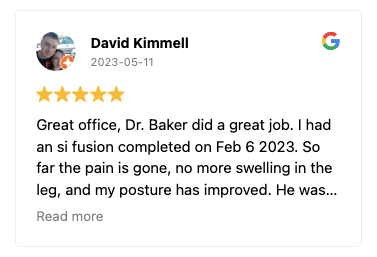Can A Stem Cell Shot Help with Joint Pain?
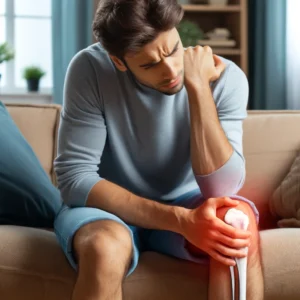
Living with joint pain can be incredibly debilitating, affecting your daily activities and overall quality of life.
Many individuals suffering from chronic joint pain are in search of effective treatments that offer lasting relief. One emerging solution in regenerative medicine is stem cell therapy.
So, can a stem cell shot help with joint pain? This article explores the potential benefits and effectiveness of stem cell injections for those struggling with joint pain.
Understanding Stem Cell Therapy
Stem cell therapy in Dallas is a groundbreaking approach within regenerative medicine that utilizes the body’s own healing mechanisms to repair and regenerate damaged tissues.
Stem cells have the unique ability to transform into various cell types, making them ideal for treating injuries and diseases.
Stem cell injection therapy involves introducing these potent cells directly into the affected area to promote healing and alleviate pain.
How Stem Cell Therapy Works
Stem cell treatment is a cutting-edge approach in regenerative medicine that involves using the body’s own stem cells to repair and regenerate damaged tissues.
The process starts with the harvesting of stem cells from the patient’s body, typically from bone marrow or adipose (fat) tissue.
These sites are chosen because they are rich in mesenchymal stem cells (MSCs), which have the potential to differentiate into various types of cells needed for tissue repair.
The harvesting procedure is minimally invasive. In the case of bone marrow extraction, a needle is inserted into the pelvic bone to withdraw a small amount of marrow.

This procedure is generally done under local anesthesia to ensure patient comfort. When stem cells are sourced from fat tissue, a small liposuction procedure is performed to collect the necessary cells. This method is also minimally invasive and done under local anesthesia.
Once the stem cells are harvested, they undergo a processing phase to isolate and concentrate them.
This step ensures that a high number of potent stem cells are prepared for injection. The processing involves separating the stem cells from other components in the bone marrow or fat tissue.
This concentration of cells is critical for the success of the therapy, as it maximizes the regenerative potential when the cells are reintroduced into the body.
The processed stem cells are then carefully injected into the injured area or the joint suffering from pain.
This injection is often guided by imaging technologies such as ultrasound or fluoroscopy to ensure precise placement.
Accurate placement is crucial because it increases the likelihood that the stem cells will reach the targeted damaged tissues and start the repair process effectively.
The entire injection procedure is typically performed on an outpatient basis, meaning patients can return home the same day.
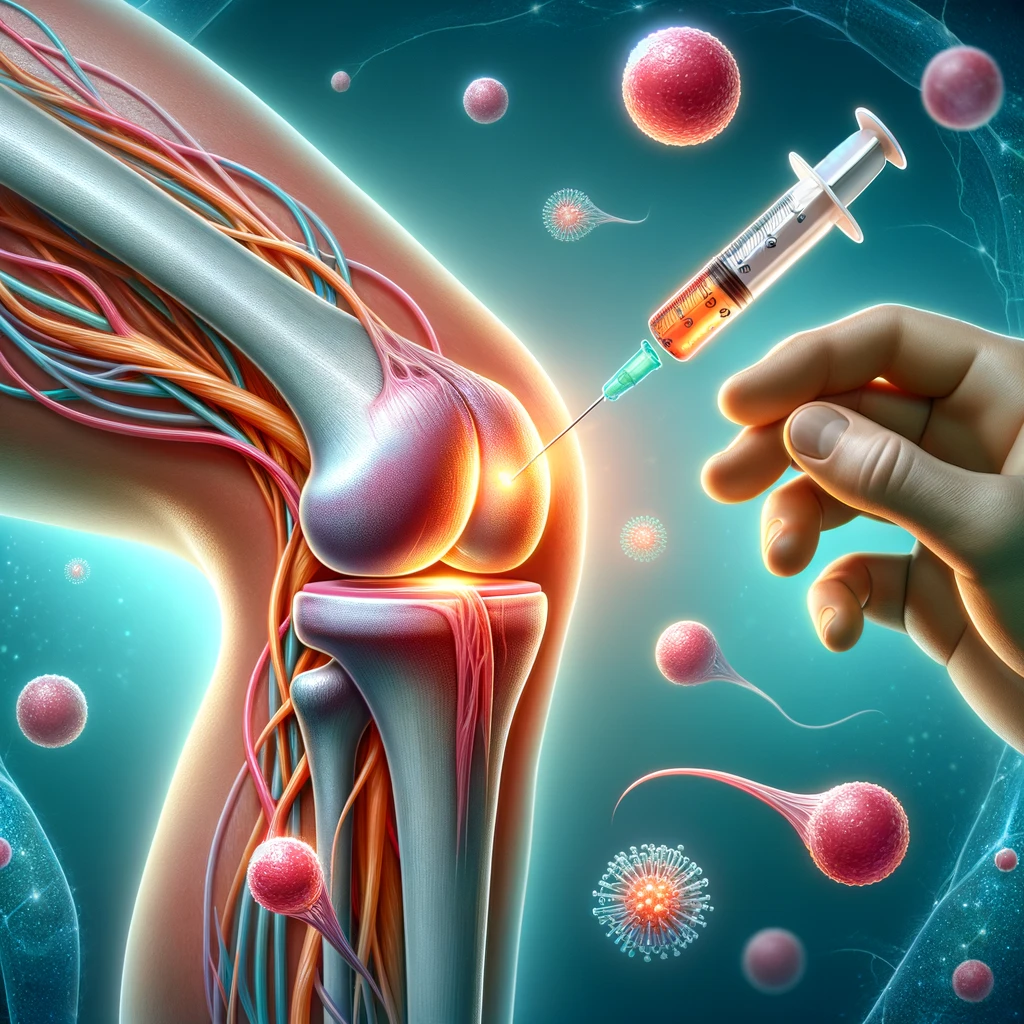
Upon injection, stem cells begin their work by interacting with the body’s tissues at a cellular level. They release a variety of bioactive molecules, including growth factors and cytokines, which are essential for modulating inflammation and promoting tissue repair.
These growth factors help to orchestrate the body’s healing response by attracting other cells to the site of injury and stimulating the regeneration of damaged tissues. The stem cells themselves can also differentiate into the specific types of cells needed to replace damaged cartilage, bone, or soft tissue.
The result of this interaction is the formation of new cells that replace the damaged ones, leading to pain relief and improved joint function.
This process of cellular repair and regeneration is not only aimed at alleviating symptoms but also at addressing the underlying cause of the pain. Over time, patients can experience a significant reduction in pain and inflammation, increased mobility, and a better quality of life.
Small Risk for Treatment of Cartilage, Arthritis & Neck Pain
Stem cell therapy leverages the body’s natural healing mechanisms, making it a promising alternative to more invasive treatments such as surgery.
By using the patient’s own cells, the risk of rejection and complications is minimized, making it a safer option for many patients.
Additionally, the regenerative effects of stem cell therapy can be long-lasting, providing sustained relief from chronic joint pain.
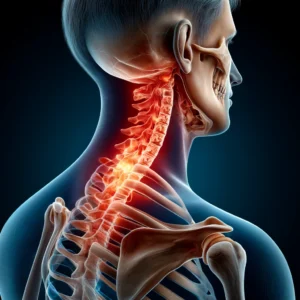
Types of Stem Cells Used in Joint Pain Treatment
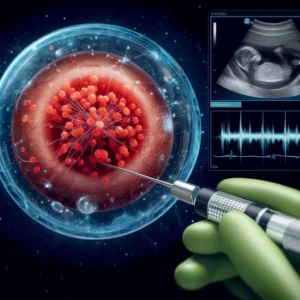
One of the most commonly used types of stem cells in joint pain treatments are mesenchymal stem cells (MSCs).
These cells are derived from human tissue, such as bone marrow or fat, and are highly effective in regenerating joint cartilage and soft tissue.
Other types of stem cells, such as those derived from red blood cells or spinal cord tissues, are also used depending on the specific treatment requirements and patient needs.
Benefits of Stem Cell Therapy for Joint Pain
Stem cell injection therapy offers several potential benefits for those suffering from joint pain. It has shown significant improvement in conditions such as knee osteoarthritis and soft tissue injuries.
By promoting the repair of damaged tissue and reducing inflammation, stem cell treatments can reduce pain and improve function.
For many patients, this means enhanced mobility and a better quality of life without the need for invasive surgeries.
Clinical Evidence and Research
Extensive research and numerous clinical trials have supported the use of stem cell therapies for joint pain. Studies have demonstrated significant improvement in pain relief and joint function in patients undergoing stem cell treatments. Other patients have reported mild improvement in chronic pain and inflammation, making stem cell therapy a commonly reported and viable option for those seeking alternative treatments to traditional therapies.
The Procedure: What to Expect
During a stem cell injection appointment, patients can expect a thorough physical exam followed by the harvesting of stem cells from bone marrow or fat tissue. A local anesthetic is used to minimize discomfort. The stem cells are then processed and injected into the affected joint. Most patients experience only minimal pain during the procedure. Post-procedure care involves follow-up appointments to monitor progress and ensure optimal healing.
Safety and Risks
Stem cell therapy is generally considered safe, with most patients experiencing minimal side effects. However, as with any medical procedure, there are small risks involved, such as an inflammatory response or infection at the injection site. It is important to discuss these risks with your healthcare provider to fully understand the safety profile of stem cell treatments.
Comparing Stem Cell Therapy to Other Treatments
When compared to traditional treatments like surgery and physical therapy, stem cell therapy offers several advantages. While surgery can be invasive and require long recovery times, stem cell injections are minimally invasive and promote natural healing. Physical therapy, while beneficial, may not provide the same level of tissue regeneration that stem cell treatments can achieve. Each treatment option has its own benefits and limitations, and it is crucial to consider these when deciding on the best approach for joint pain relief.
Who Are Good Candidates for Stem Cell Therapy?
Good candidates for stem cell therapy typically include patients with joint pain due to arthritis, injury, or degenerative conditions. Those who have not responded well to other treatments, such as physical therapy or medications, may find stem cell therapy particularly beneficial. It is essential to consult with a medical professional to determine if you are a suitable candidate for this innovative treatment.
Considering Stem Cell Therapy?
Stem cell therapy represents a promising frontier in the treatment of joint pain, offering potential benefits that can significantly improve the quality of life for many patients. By exploring the question, “Can a stem cell shot help with joint pain?” we find that stem cell therapy could provide effective pain relief and improved function for those suffering from chronic joint issues. For personalized advice and to learn more about how stem cell therapy can help you, schedule an appointment today with Dr. Baker.
Dr. Abdul Baker - An Expert Neurosurgeon in Texas
Every neurosurgery has its complications; thus, a patient must choose the best neurosurgeon for himself. Dr. Abdul Baker is one of the most experienced and qualified neurosurgeons in Texas, treating patients for more than 16 years. People in Sherman, Plano, and nearby areas trust him for every kind of neurosurgery due to his surgical procedures’ 100% success rate. You may visit him if you need any consultancy or treatment regarding your brain and spine disorders.


Dr. Baker specializes in neurosurgery, neurosurgical spine surgery, neurotrauma, brain tumors, spinal tumors, and peripheral nerve damage treatment.









